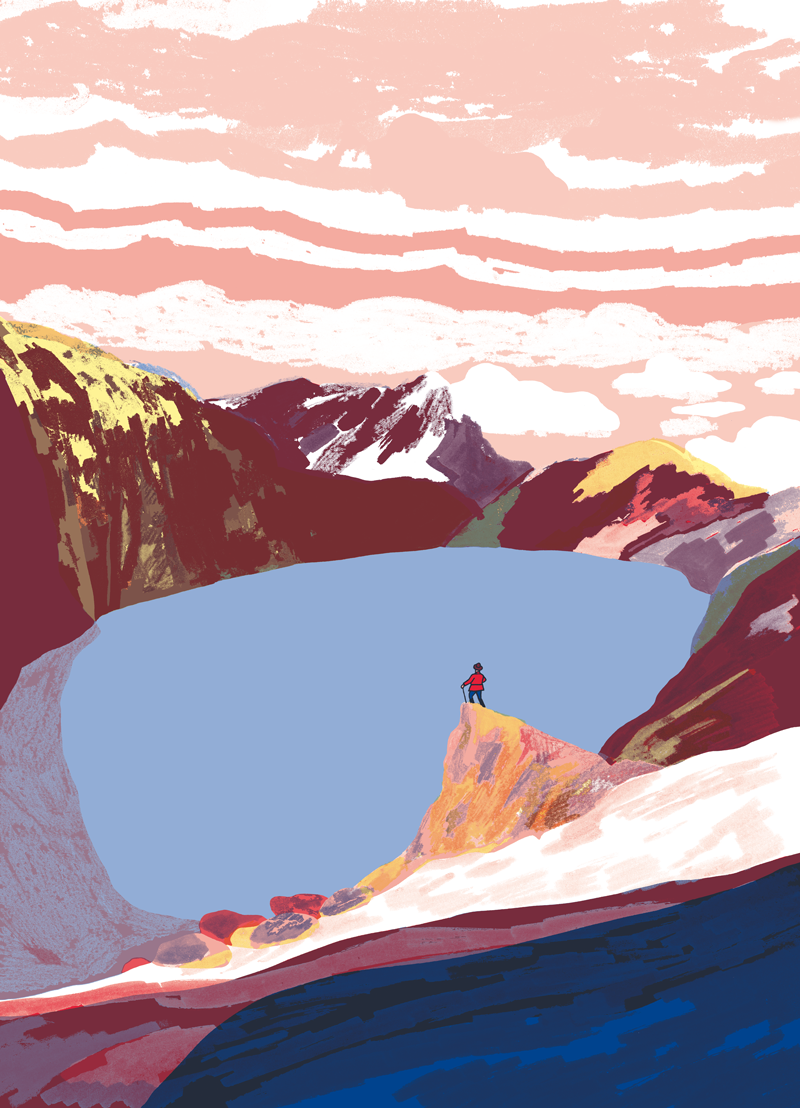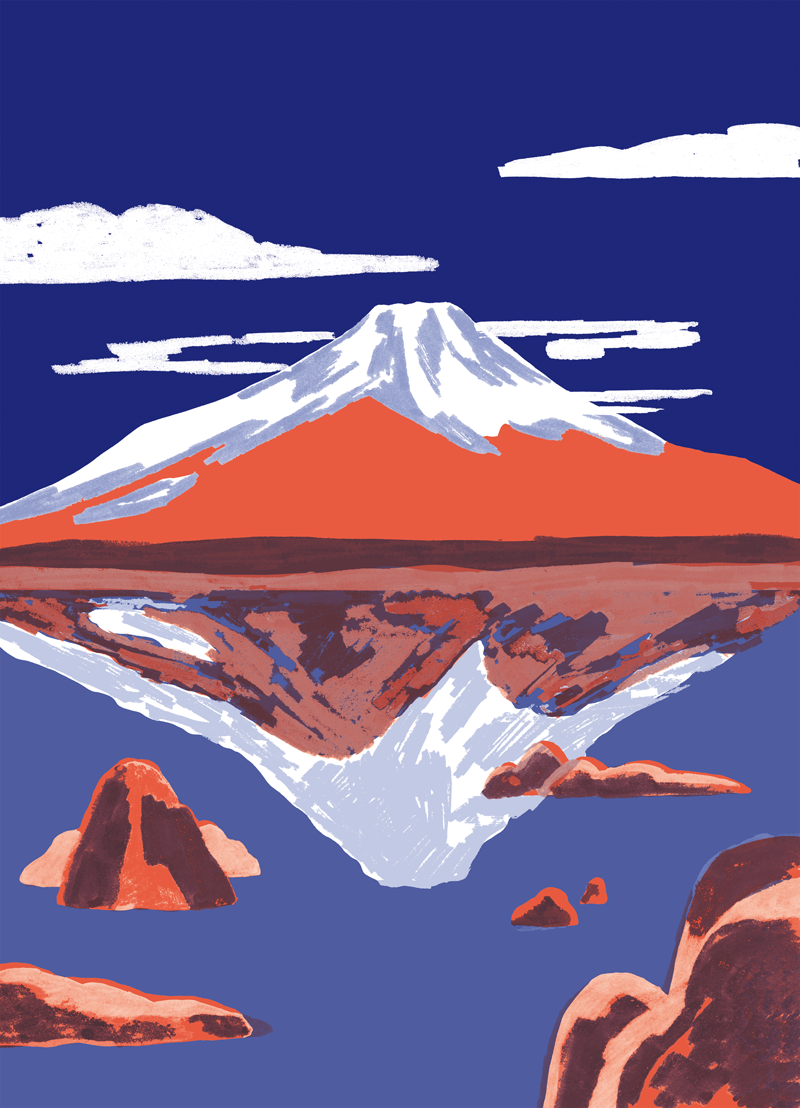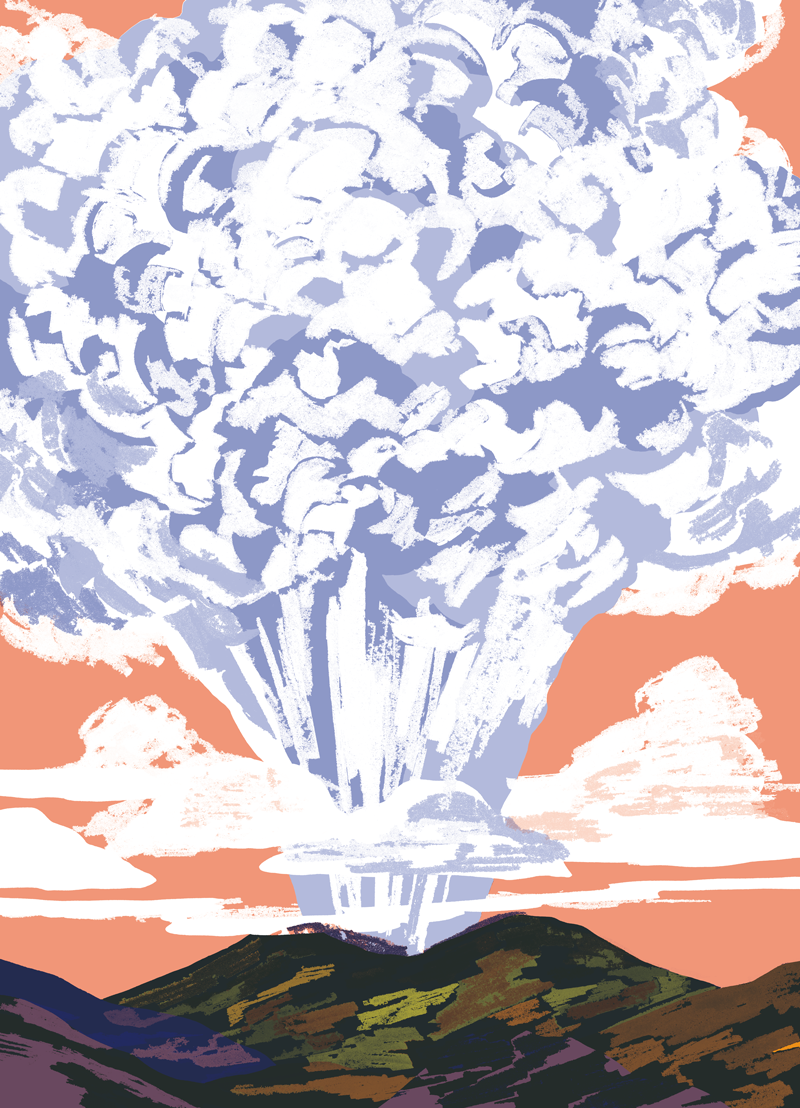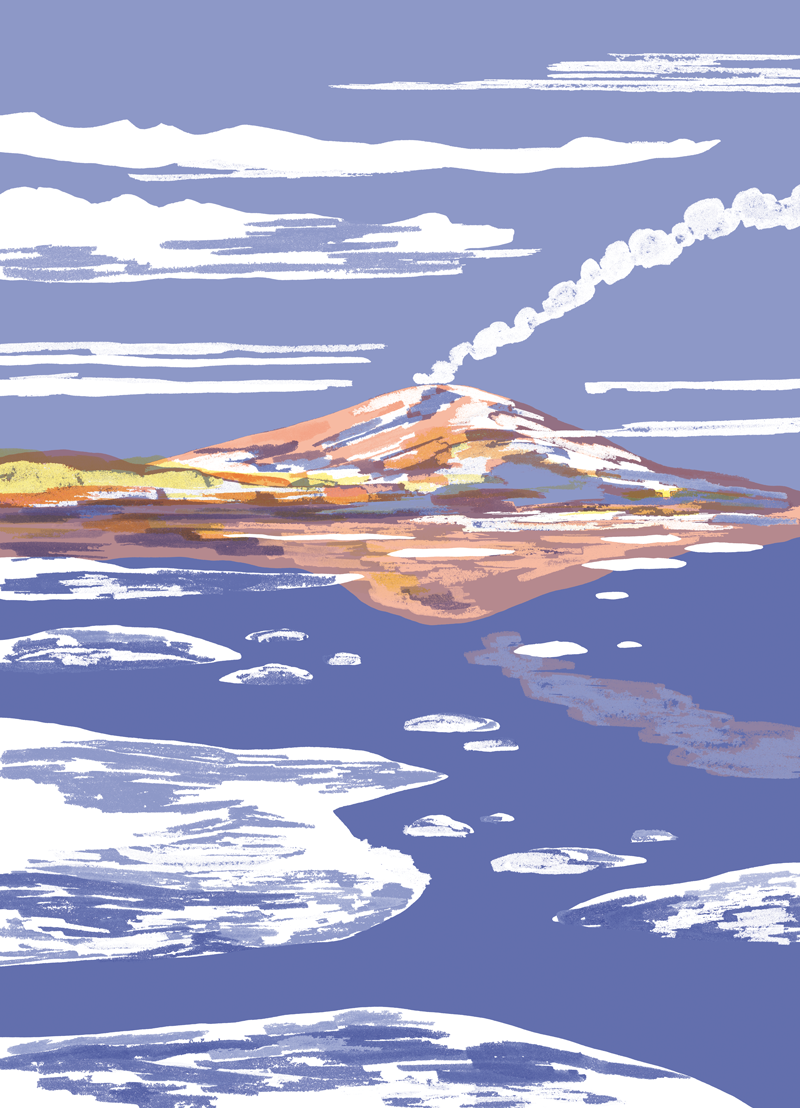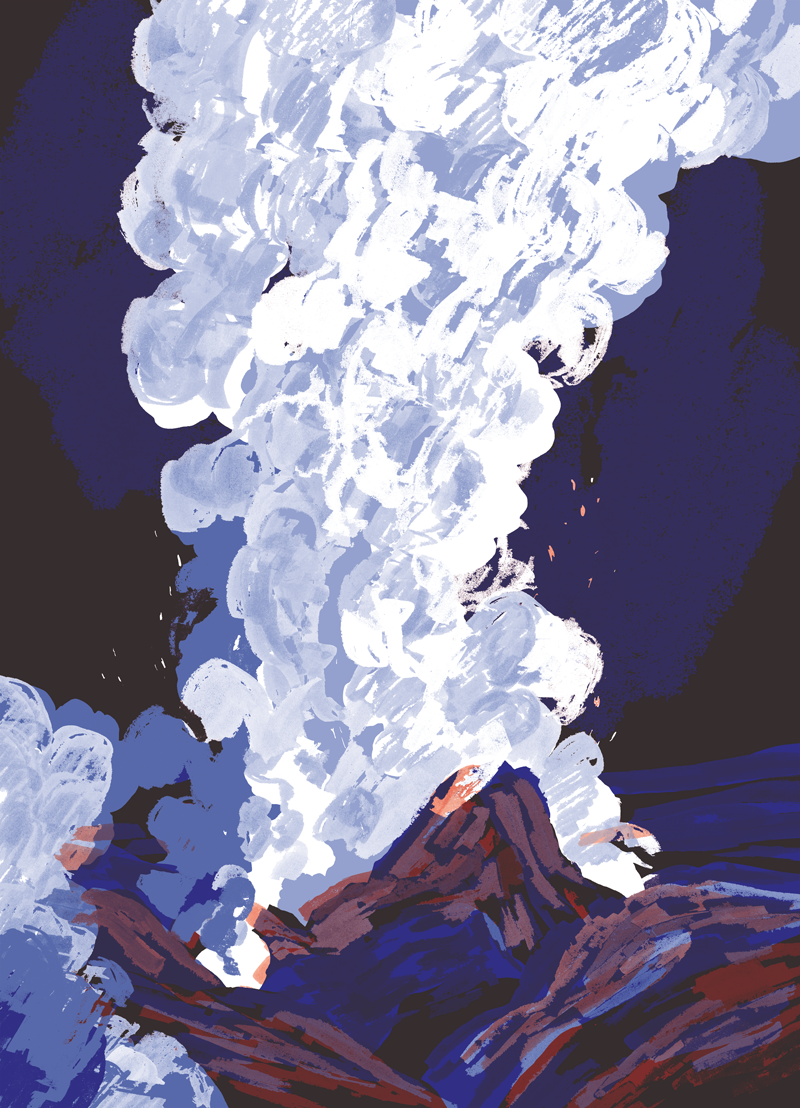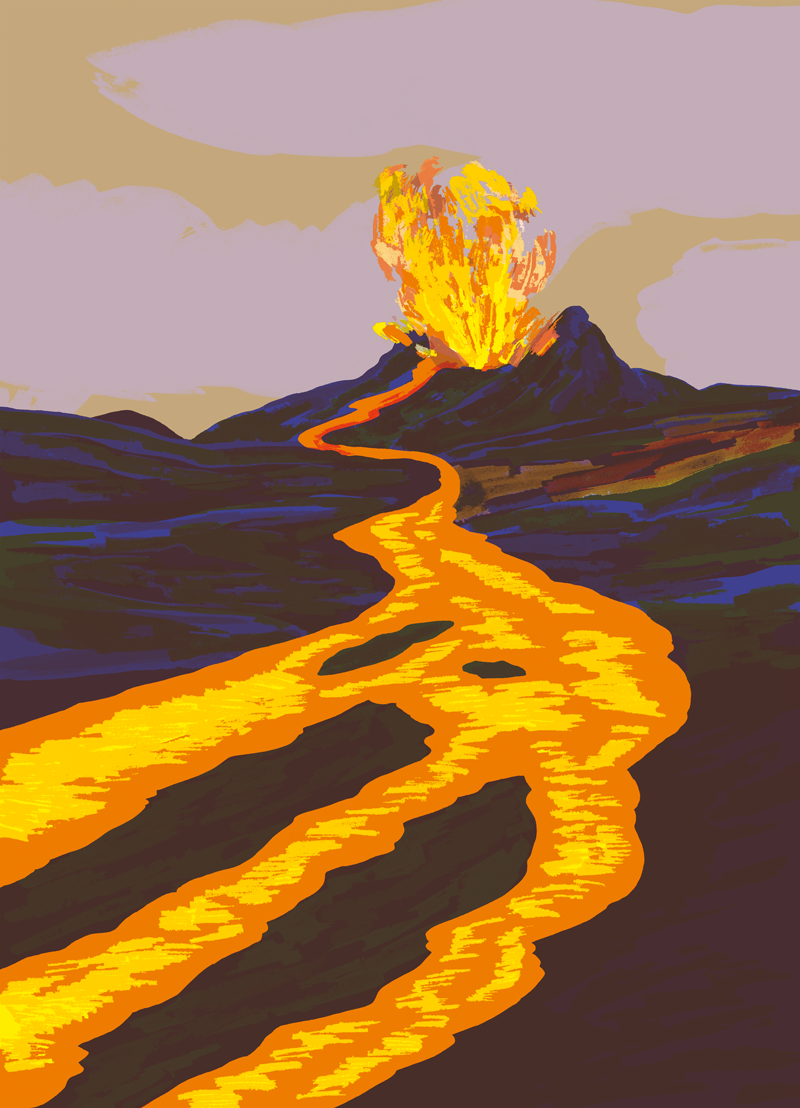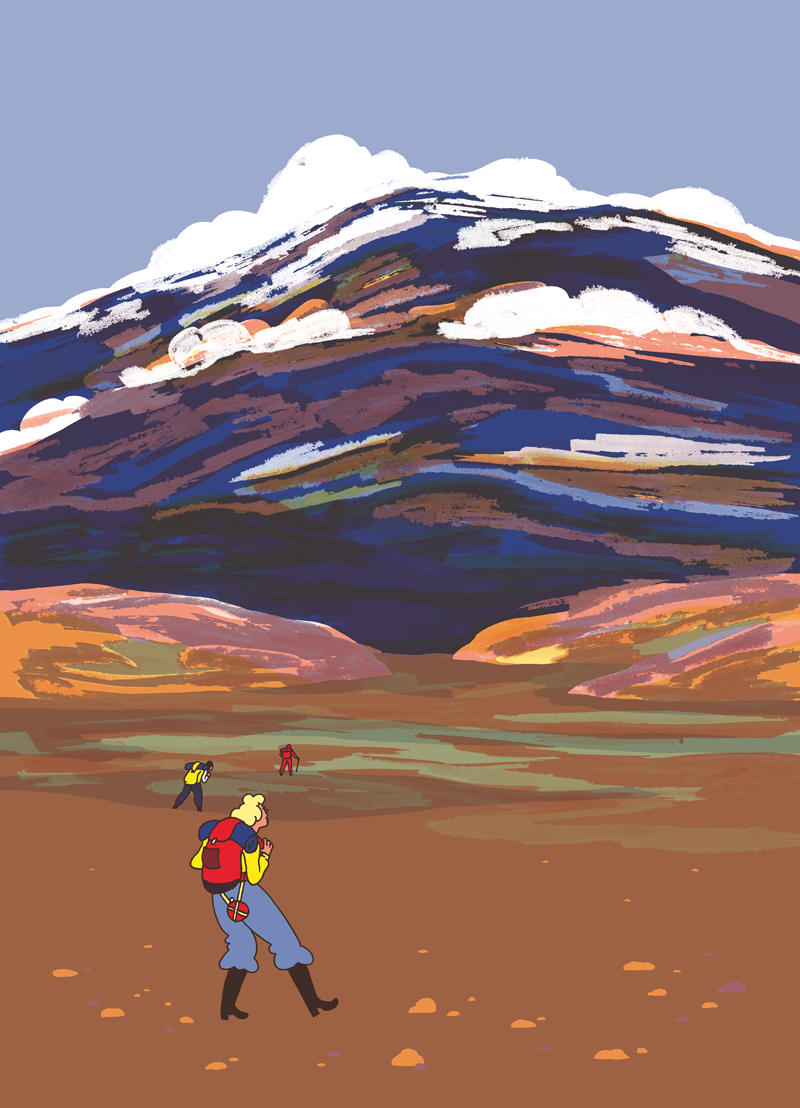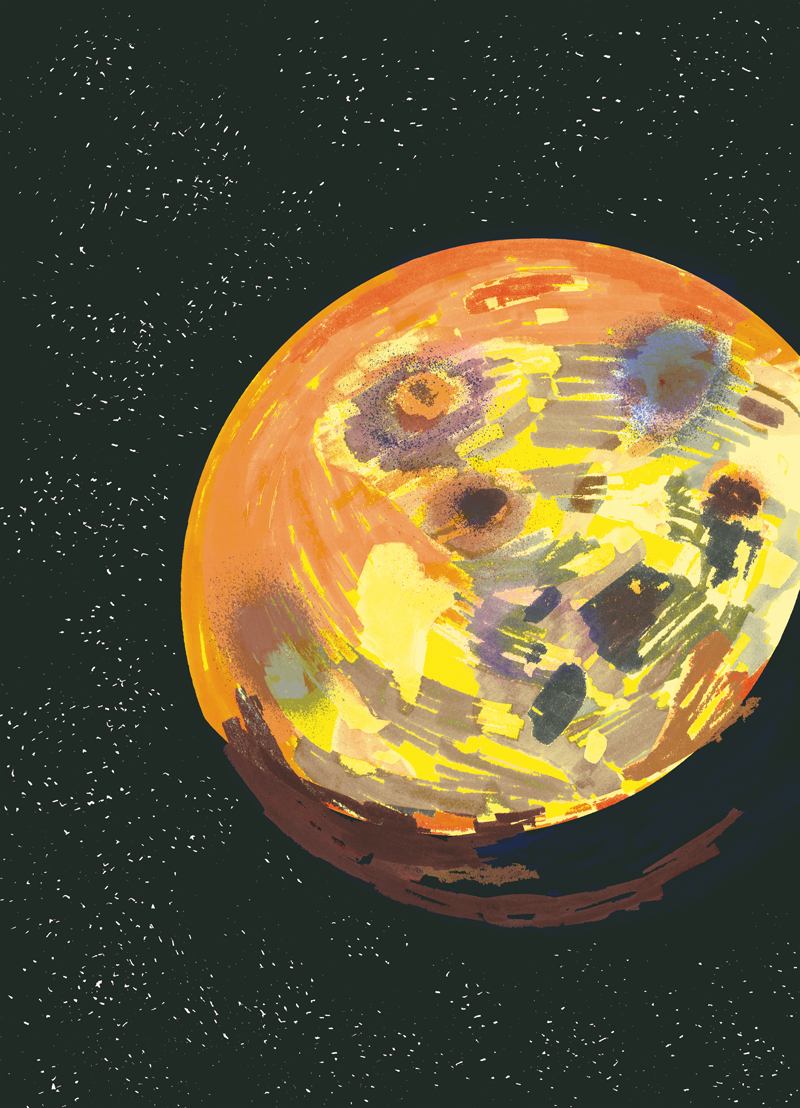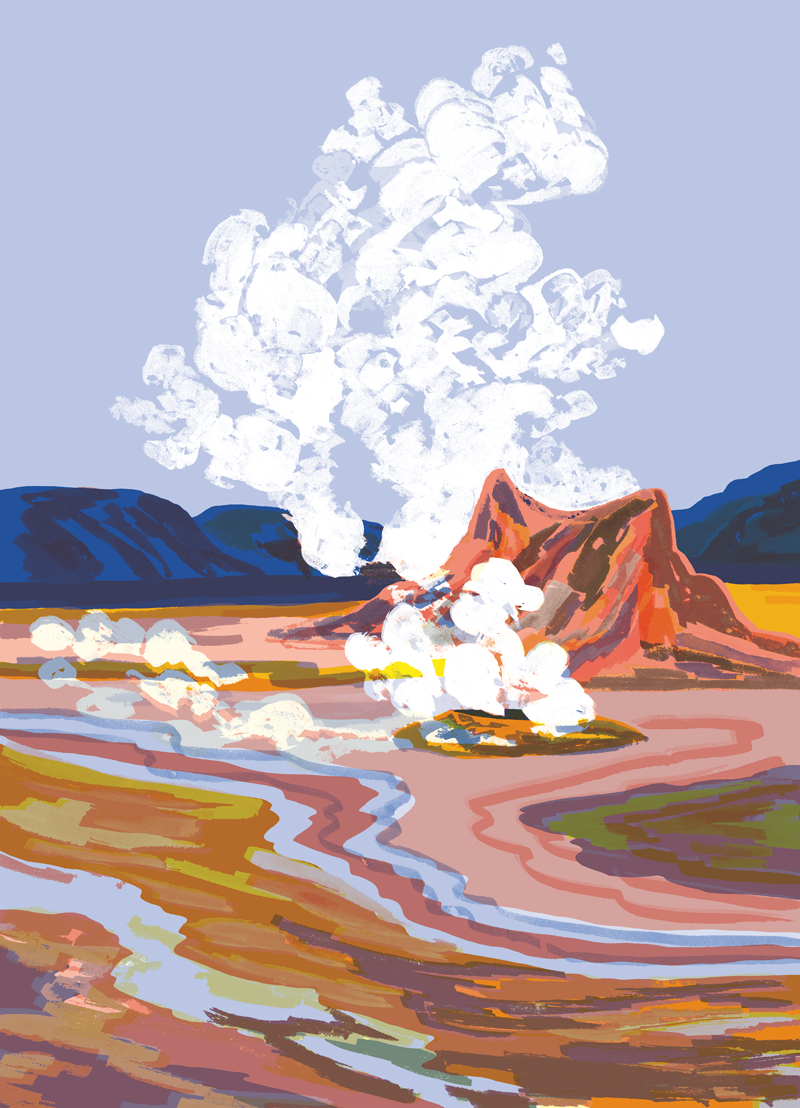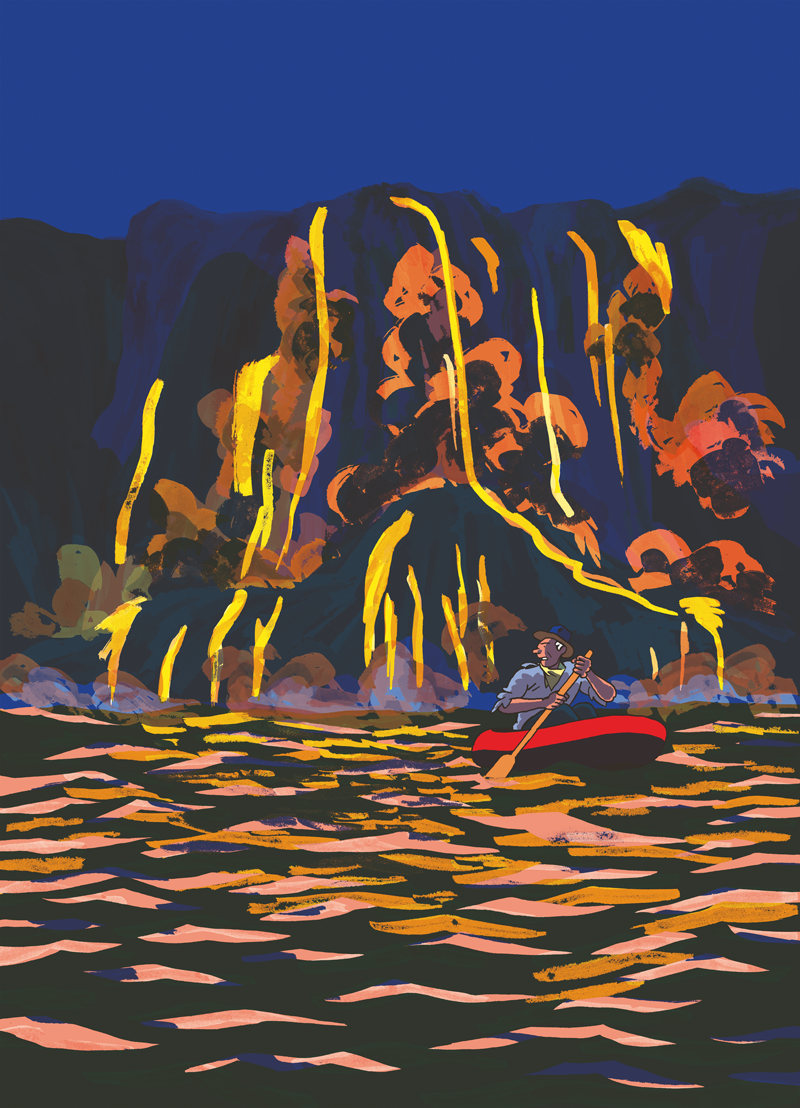Volcanoes
Whether dormant or live, volcanoes are fascinating to look at. The magma from the depths of the Earth can emerge calmly or explosively, and every volcano is different: small, large, pointed, submarine, extraterrestrial. This collection of cards explores the captivating and diverse world of volcanoes.

Ruapehu: A Crater Lake
New Zealand – Altitude: 2,797 m – A volcano’s magma comes to the surface through a crater, often found at the summit of the volcano. The crater can become filled with water from rain and rivers or subterranean waters, in which case it is said to contain a crater lake. If the volcano beneath the lake is active, the water becomes acidic and hot. This is true of the Ruapehu volcano.
K5A7X
Loihi: A Submarine Volcano
United States - Altitude: -975 m - Loihi is a volcano that formed off the Island of Hawaii—at the bottom of the ocean. The volcano exceeds three kilometres in height. Many years from now, its summit will reach the water’s surface. Today, though, it remains underwater.
R8R9R
Yellowstone: Calderas on the Volcano
United States - Altitude: 2,805 m - The Yellowstone volcano is still active nowadays. However, its activity has been relatively calm recently, mostly consisting of water vapor and gas emissions as well as boiling water spit out by geysers. In the last two million years, the volcano has undergone three major eruptions that have left it marked with large cauldron-like depressions, called calderas.
N8H3N
Fuji: A Near-Perfect Volcano
Japan - Altitude: 3,776 m - Few volcanoes have such a symmetrical cone shape. Mount Fuji is one of them, revealing a defining feature of the stratovolcano. Stratovolcanoes have steep, even slopes leading to the summit, and can reach many kilometres in height. The base of a stratovolcano can also span several kilometres in diameter.
J7W9A
Mauna Loa: The Largest Active Volcano on Earth
United States - Altitude: 4,170 m - Mauna Loa, located in Hawaii, is the largest active volcano on Earth. Its summit reaches altitudes greater than 4 kilometres. Its base lies at the bottom of the ocean, five kilometres below the water’s surface. Because it is so heavy, however, the volcano has sunk 8 kilometres deeper into the ocean floor. Its total height is therefore 17 kilometres.
J5C8A
Kilauea: Lava Tunnels
United States - Altitude: 1,247 m - The Kilauea volcano has something very special about it: lava flowing underground through its tunnels at a temperature of 1,200°C. The lava travels for kilometres and then drains into the sea. Some lava tunnels are so large that you can walk around in them once they’ve been emptied.
Q6U3L
Pinatubo: Dangerous Ashes
Philippines - Altitude: 1,486 m - The eruption of the Pinatubo volcano in 1991 was impressive owing to the large volcanic cloud it sent rising 40 kilometres into the air. A lot of ash was ejected and landed all over the place, chiefly on nearby houses. The accumulation of ash caused roofs to collapse, making it dangerous for the inhabitants.
F5W7R
Ojos del Salado: The Highest Active Volcano on Earth
Chile/Argentina - Altitude: 6,879 m - The volcano with the highest altitude on Earth is located on the border between Chile and Argentina, and is named Ojos del Salado. Its summit is 6,879 metres above sea level. Although the volcano is still active, its last eruption dates back several centuries.
L4X3Q
Mount Erebus: An Antarctic Volcano
Antarctica - Altitude: 3,794 m - Volcanoes are scattered all over the Earth’s surface. They can even be found in cold climate regions. Such is the case of Mount Erebus, an active volcano located in Antarctica. One of the world’s rare lava lakes can be found at its summit. However, since the volcano is covered in ice, it is not easily accessible to humans.
Q7L3H
Prometheus: Jupiter’s Lunar Volcano
Jupiter - Volcanic clouds of 300 km - More than 400 active volcanoes exist on Io, one of Jupiter’s moons. Prometheus is one such volcano. Io can produce very large and powerful volcanoes; scientists have observed volcanic clouds projected 300 km high. By contrast, terrestrial volcanoes such as Mount St. Helens project clouds that reach 25 kilometres.
T3V4J
This collection on volcanoes was developed in partnership with l’Université du Québec à Montréal. The author, Hélène Gaonac’h, is a researcher at the GEOTOP centre at l’Université du Québec à Montréal.
mdc.uqam.ca
Its completion was made possible thanks to financial support from the Ministère de l’Économie, de la Science et de l’Innovation du Québec as part of the NovaScience program.
economie.gouv.qc.ca